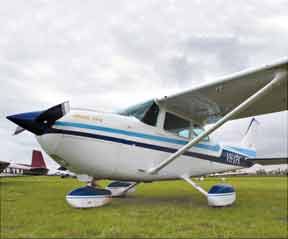The Cessna Skyhawk has been in near-continuous production for over 50 years and there are over 40,000 of the model out there in the world. There’s a reason for that: The design simply works.
That’s not to say Cessna hasn’t evolved the design and explored variations on the theme. One of these is the Hawk XP, essentially a 195-HP 172 with a constant-speed prop. Some people think of the XP as a Cessna 182 engine in a 172 body. It’s not. Others imagine it’s an aftermarket upgrade to a stock 172. There is such a thing, but the XP was a factory model.
The Hawk XP is a 172 that carries more, climbs better and cruises a bit faster than standard 172, without giving up the predictable handling or maintenance. For some buyers, that’s exactly what they need.
Model History
The original 1956 Cessna 172 flew behind a 145-HP, six-cylinder Continental engine. In 1962, engineers hung a 210-HP version on the airframe and began flight testing the combination the next year. It went through certification and was initially sold to the U.S. Air Force as the T-41B in 1967. Known to the FAA and within Cessna as the model R172E, the decision was made to build the civilian Cessna 172 on steroids at Cessna’s plant in Reims, France, starting in 1968. There it was called the Reims Rocket and as the FR172E through I series, was one of Cessna’s hotter sellers. Air forces throughout the world also bought the aircraft as the T-41B through D.
In the U.S., Cessna planned to replace the Cessna 172 with the Cessna 177 Cardinal in the 1968 model year as part of an overall plan to return all of its single-engine airplanes to sleeker, strutless (cantilever) wing designs. (Cessna started manufacturing airplanes in 1927, but didn’t put a wing strut on a production airplane until 1946.) It had begun the process with the Cessna 210 in 1967, and the plan was to replace the Cessna 182 with the Cessna 187 following the Cardinal world takeover.
Cessna’s attempt to replace the Skyhawk didn’t go as planned. The Cessna 177 had a cabin that was larger than the Cessna 182 and carried about 10 gallons more fuel than a 172, but it was also heavier. Pilots predictably overloaded it, and then complained about its performance. Numerous comparison tests proved a Cessna 177 would slightly outclimb and outrun a Cessna 172 when each was loaded at published gross weight, but to no avail.
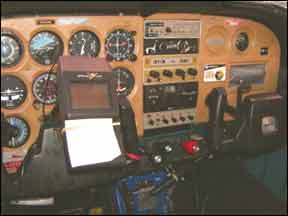
Compounding the problem were control differences. The Cardinal was noticeably more responsive in pitch and roll, leading to overcontrolling by pilots used to the 172. The Cardinal’s stabilator was insufficient to stave off some expensive, nose-heavy landings. This was fixed with retrofitted slots, but again, the reputation damage was done.
Cessna quickly realized that the Cardinal was not going to do what had been hoped and used many of the thousands of 150-HP Lycoming O-320-E2D engines it had purchased for the Cardinal to replace the 145- HP Continental O-300-D on the Cessna 172, putting the Skyhawk back into production in the latter portion of the 1968 model year.
In 1969, the Cessna 177 got a 180-HP Lycoming O-360, which remained its powerplant through the end of its production run in 1978. We suspect that Cessna did not initially market the R172 series in the U.S. because its performance was too close to Cardinal 177 and it would have had two airplanes in the same market niche. That may also be why Cessna didn’t build the Cardinal in France, yet it did build the Cessna 177RG there.
By the mid-1970s, the handwriting was on the wall for the Cardinal. With all of its compound curves, it was more expensive to build than even the Cessna 182 and sales were dropping steadily. Anticipating the end of production of the Cardinal, Cessna decided to sell the Reims Rocket in the U.S. under the appellation of Hawk XP, with the XP denoting “extra performance.”
For 1977, the R172K in both the U.S. and France mounted a six-cylinder Continental IO-360K with a two-blade constant-speed propeller. This powerplant produced 210 HP at 2800 RPM, but Cessna derated the engine to 195 HP at 2550 RPM to meet noise requirements. The gross weight was 2550 pounds, 250 more than the Skyhawk for the same year.
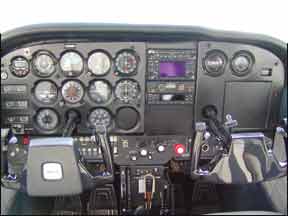
For two years or so, the Skyhawk, Hawk XP and Cardinal were sold side-by-side. Average equipped prices for 1977 were: Skyhawk $30,050; Hawk XP $38,680; Cardinal $39,195. The following year, presumably to avoid direct competition between the Cardinal and Hawk XP, the Cardinal was loaded with avionics, a new name (Cardinal Classic) and had its price cranked up to a hefty $50,760 versus $41,050 for the Hawk XP.
Cessna got the marketing and pricing right with the Hawk XP. In the year of introduction, the company built 724 Hawk XPs, versus only 149 Cardinals. In 1978, another 204 XPs rolled out the factory doors compared with a lackluster 74 Cardinal Classics, although the price hike probably hurt sales more than anything else.
Interestingly, the Hawk XP was one of the first of the Cessna line to succumb to the general aviation decline of the 1980s. Production lasted only through 1981, with a total run of 1450 airplanes, over half of which were built during the first year of sales. Over that short span, the Hawk XP gained a 28-volt electrical system, flap speeds were increased, the IO-360KB engine was used with an increase in TBO (from a mediocre 1500 hours to a respectable 2000), an oil filter was added and it got an improved avionics rack with a cooling fan.
The company didn’t abandon the idea of an uprated Skyhawk, however. In 1977, the standard Skyhawk received a 160-HP Lycoming engine that was better able to swallow 100LL avgas. In 1980, Cessna brought out the Cutlass RG, a retractable Skyhawk with a 180-HP Lycoming and constant-speed prop intended to be a trainer for complex aircraft operations.
In 1983, two years after the Hawk XP ended production, the 172Q Cutlass appeared—a fixed-gear version of the Cutlass RG—which lasted for two model years and 390 units. When Cessna restarted production of the 172 in the 1990s, it again produced the 160- and 180-HP versions of the Skyhawk. Today, only the 180-HP Skyhawk SP remains in production.
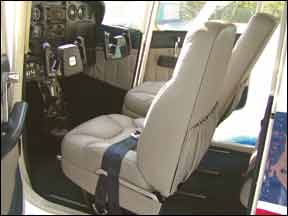
Cardinal Comparisons
When the Hawk XP was introduced, The Aviation Consumer did a side-by-side comparison of the new airplane and the Cardinal. We found that the Cardinal was, on the whole, a better airplane. It offered better handling, better visibility, a much larger cabin, less noise, lower maintenance costs and almost identical performance and load-carrying capacity. The more aerodynamic Cardinal was a bit faster on 15 fewer HP, could carry more and could take off and land a bit shorter. On the other side of the balance sheet, the Hawk XP could fly higher and farther. Despite the lack of a clear-cut advantage for the Hawk XP, it trounced the Cardinal in sales in 1977 and 1978. Such is the power of marketing and reputation as we’ll as a much lower price.
Current prices on both models have declined considerably since we last examined this XP in 2007. Hawk XPs with average equipment sell for $43,000 to $51,000 for the latest model year, the 1981 model. By comparison, fixed gear Cardinals of relatively the same vintage sell for about $43,000. Straight-leg Skyhawks of this vintage retail in the high 30s and low 40s, with average equipment. The fixed-gear version of the Cutlass—a very rare model—retails in the $45,000 range.
Climb, Yes. Speed, No.
The Hawk XP isn’t a speed demon. Those struts and broad frontal area for upright seating mean the XP cruises at a rather lethargic 125-130 knots despite pumping nearly 200 HP. The Mooney 231, also equipped with a Continental IO-360 (albeit turbocharged and producing the full 210 HP) flies along at 165 or so.
The impact of a draggy airframe is perhaps more clearly seen by comparing the 195-HP Hawk XP to a contemporary 165-HP Skyhawk, where the 35 extra horses only generated eight knots or so more speed in cruise.
Gross-weight climb according to the book is 870 FPM, a tad better than the Cardinal or the Skyhawk of the same vintage and about the same as the Skylane. Gross-weight takeoff performance is virtually identical to the Skyhawk. Of course, the XP’s numbers come at a higher gross weight, but 150 pounds of that is taken up by the heavier engine and prop. The real payload difference is only 100 pounds.
XP pilots rave about real-world performance. One perhaps optimistic fellow swears he gets 1500 FPM at moderate weights, even in warm weather. “Has near-STOL characteristics,” reports another. Something more like 1000 FPM at moderate weights is a more common report. But that’s no surprise as the basic 172 has good short-field performance thanks to its low stall speed. The XP’s extra power can only help.
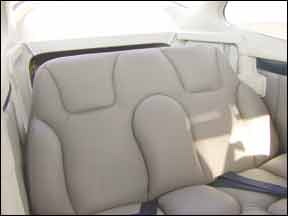
Useful load for a basic-IFR XP runs around 900 to 950 pounds. One owner of a lavishly equipped XP reports 879 pounds. With the standard 49-gallon tanks filled, the cabin load is about 600 to 650 pounds: three people and some luggage. Subtract 100 pounds if the optional 66-gallon tanks are filled.
At max cruise, the XP slurps north of 11 GPH, but most pilots throttle back to 10 or less. At moderate power, four hours and 450 miles is about as long as you’d want to fly one. The optional tanks stretch the range to 650 miles. If these numbers appeal, consider that the XP’s immediate successor, the Cutlass, has the same airframe and gross weight, but 180-HP Lycoming engine. It weighs 100 pounds less empty and burns 1.5 GPH less fuel.
Handling
Since the Hawk XP is essentially a Skyhawk, it’s no surprise that it handles like one—steady and sedate. Although, we heard from one pilot who taught himself aerobatics in a T-41B, the aforementioned military version of the XP.
Roll response is fairly ponderous and pitch control is heavier than the Skyhawk, due to the extra weight of the engine. A new elevator introduced in 1981 reduced pitch forces. The XP’s handling characteristics may not set your hair on fire, but snappy handling is exactly what you don’t want in an IFR platform.
As with all Cessnas, the huge flaps cause some pitch changes and they’re so draggy in the 40-degree position that gross weight go-arounds require some finesse. Flap travel was reduced to 30 degrees in later models to improve handling when slipping with full flaps.
On the ground, the nosewheel steering is rather heavy. And the high-wing design makes the XP susceptible to winds on the ground if the pilot doesn’t properly position the ailerons when taxiing. Again, typical Cessna.
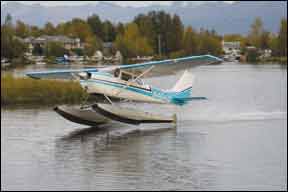
In short, the handling is exactly what you’d expect from an airplane based on the Skyhawk. Predictable, stable, docile and offering no surprises. These characteristics meet the design mission we’ll and contribute to its historically good safety record.
Accommodations
The interior of the Hawk XP is fairly comfortable. Like the Skyhawk, the panel is relatively tall and the seating position upright. Cessna offered articulated seats with height adjustment, a valuable option, in our opinion, as they fit a wide variety of pilot frames. The seats are subject to the famous Cessna seat-track AD, recently updated but largely unchanged.
Access is easy due to the double doors and getting into the back seats is easier than on low-wing designs. It’s easier to step up into a cabin than it is to lower yourself down into a pit. Ventilation on the ground is good thanks to windows that open. There’s adequate head- and legroom for all four seats.
Visibility is the classic tradeoff of high- versus low-wing aircraft. One particular caveat with Cessnas is that the top of the door window is only a few inches above the level of the top of the glareshield. So there’s some obstruction to the side when the seat is raised to improve forward visibility.
The panel is we’ll laid out for airplanes of its vintage, with standard vernier controls and conventional instrument placement. The cockpit gripes applicable to the Hawk XP should come as no surprise to Cessna owners: Royalite panels that yellow and crack, vent tubes that can pop open at high speeds. You might still find one with the infamous ARC electronics. These were destined for paperweight status when they left the factory, so don’t expect much from them now.
The baggage compartment is of reasonable size, with a fairly large door. It can be accessed in flight. The size of the door is a welcome thing should it be necessary to get out of the airplane through it after a crash.
Maintenance
The heart of the XP’s performance—and problems—is the six-cylinder Continental IO-360-K and -KB engine. It’s expensive to overhaul and has a mediocre reliability record. The engine’s main problem seems to be that it’s tough on cylinders. Low compression and/or high oil consumption are not unusual.
Not everyone has cylinder problems—we had owner reports of 1800-plus hours of trouble-free operation—but cylinder cracks, along with piston, ring and valve troubles, seem more common than in similar Lycoming engines. One owner, for example, reported he had to replace two cylinders in the first 600 hours, and then had a cracked piston that allowed most of the oil to leak out. Scans of SDRs show that cylinder cracking is fairly common.
There have also been crankshaft failures. The -KB engine with its 2000-hour TBO was a result of Continental beefing up the crank in 1979. Given the cost of overhaul, anything to make the engines last longer is a plus.
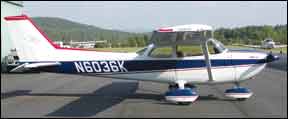
Judging from owner reports, the XP is easy to maintain; not surprising, since it has the same airframe as the familiar Skyhawk. Surprisingly, despite the extra weight up front, we have found no real problems with the nose gear or its attachment at the firewall. Typically, airplanes with heavier engines are more likely to suffer hard-landing damage from pilots slamming the nose down. Still, we recommend a close look at the area.
Unfortunately, most XPs were made during 1977 and 1978, the years in which Cessna let its quality control slip badly as it struggled to meet a huge demand for its airplanes. Virtually all single-engine Cessnas made at this time had improperly performed paint jobs because Cessna ignored DuPont’s specifications and used a cheap, quick primer under the paint. The result was persistent filiform corrosion that affected hundreds (if not thousands) of aircraft, particularly those based in warm, humid climates. By now, most if not all of these aircraft have been repainted, but a check should be part of the pre-buy inspection.
There are no particularly onerous ongoing ADs on the Hawk XP. Naturally, several of those that apply to the 172 also apply to the XP, but for the most part they’re one-time modifications that should have been done long ago.
Recent directives include 2011-10-09, updating the requirements for recurring seat-track inspections, 2008-26-10, for an inspection to ensure the alternate static source port isn’t blocked by its ID placard, 2006-03-08, for Aero Advantage vacuum pumps, 2004-19-01, for inspection of upper shoulder harness adjusters; 2002-13-04, inspection of the magneto impulse coupling; 2000-23-21, a one-time sampling of the metallurgy of the crankshaft and possible replacement; 2000-06-01, inspection of the fuel strainer assembly; 97-1-13, a Cessna-specific “shotgun” AD that mandates replacement of hoses; 97-26-17, which calls for ultrasonic inspection of the crankshaft and possible replacement if defects are found; and 95-11-8, inspection of the prop blade clamp screws.
One advantage of buying a Cessna single is that it’s very easy to find parts and maintenance expertise. The Hawk XP is no exception. The airframe holds no surprises, and it’s not different enough from the standard Skyhawk to cause any trouble for mechanics.
Mods, Clubs
STCs are available to bump the power of the derated IO-360 back up to the full 210 HP (Isham, Inc., www.PlaneTools.com) by increasing the maximum RPM. Hartzell (www.hartzellprop.com) offers one of its three-blade, Scimitar blended airfoil conversion “Top Props” for the Hawk XP which, in our experience with other airplanes, improves rate of climb and reduces vibration without hurting cruise speed.
There’s also the usual selection of flap, aileron and elevator gap seals, go-fast fairings and so forth. It’s a safe bet that any company that makes mods for the Skyhawk has a version available for the Hawk XP. The owner’s club to join is the Cessna Pilots Association (www.cessna.org, 805-922-2580), which offers a magazine, insurance discounts and technical help.
Owner Feedback
The Cessna R172K, or more commonly called the 172XP, is a great platform.
Ours was a 1977 and the true airspeed was 120 knots running it at 24 by 24. I always planned for 12 GPH, but as soon as we reached altitude, it was easily leaned to 10 GPH using the EDM 700. We had an IO-360 with the Isham conversion bringing it up to 210 HP. Having the KB heavy case is important as the K case is too light.
I flew it to Alaska four times and I never had a problem. It had a great instrument package that was not exorbitant, but very efficient. We had a Garmin 430 with WAAS, a 496 with the XM Weather and an STEC 50 autopilot. I feel having the weather available in an airplane the same as I do an instrument rating—everyone should have it.
The insurance last year for liability only was $500. Adding hull coverage brought it up to $1700. We put extra hull insurance on when traveling when we couldn’t guarantee we could put it in a hangar on a regular basis. The annual normally runs around $1200, plus any discrepancies.
Mary Build
Naples, Maine
Valley Flyers was organized in New Hampshire in 1988 to purchase our 1977 R172K. There are five owners. We’ve had eight different owners since we started; I am one of two original owners.
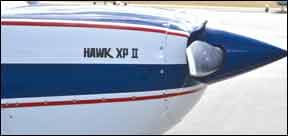
The plane was purchased just prior to TBO and we had a major overhaul done on the 195-HP IO-360-K engine and the propeller, which is constant speed. In 2001, the engine was replaced with a factory-remanufactured, 2000-hour TBO IO-360-KB. The engine is fuel injected and has performed flawlessly since then. There have been no problems starting the engine even when hot.
Most performance numbers are similar to other 172 models with the exception of climb, which is often 1000-1500 feet per minute. Maximum gross weight is 2550 pounds and our useful load is 900 pounds. The wings hold 49 gallons of fuel. We flight plan for 115 knots and 8-9 gallons per hour.
In 2002, we gave serious thought to trading the plane for something newer. The plane had originally been located in Arizona and the paint and interior plastic suffered as result. Everyone agreed that they really wanted to keep the XP platform and we began a program to seriously upgrade the plane. These upgrades included a Garmin 340 audio panel, 327 transponder and 430 GPS with new Garmin CDI, as we’ll as two new comm antennas and marker antenna. The 430 was later upgraded to WAAS. The plane was then repainted and the interior was completely replaced. In 2004, we added an STEC 30 autopilot with GPSS.
We bill our owners two ways. Everybody pays a monthly fee to cover all of our fixed expenses, currently $155. Each time an owner uses the plane, they pay $20/hour and their own fuel costs. The most recent annual inspection for the plane was $1700 and the IFR certifications were $468. Our most recent annual insurance renewal was $2234.
Our Hawk XP is great to fly, a solid platform in the air and does really we’ll in IFR conditions.
Barry McCabe
West Hartford, Vermont
My 1977 XP was delivered from the factory with a seaplane kit installed, which includes extra bracing for the wings and corrosion protection. The airplane received a new factory remanufactured IO-360-KB engine in 2003 when cracks were found in the heads of the original engine. The airframe has about 2200 hours on it. The current engine has about 900 hours on it.
Since purchasing the airplane I have flown it about 30 hours, much of this time has been on cross-country trips. During this time, I am averaging 10.7 GPH fuel consumption and about one quart of oil per 10 hours. Although I have read that many XP owners get a true airspeed of 130 knots, I am only seeing about 125 knots. I have not put the wheel pants on yet, so this may improve cruise a bit.
This is the first airplane I have owned (even though I have about 1900 hours total time as a pilot). I was a military pilot back in the 70s and early 80s, and mostly flew C-123 and C-130 aircraft. But I did not fly at all for about 28 years. When I purchased this airplane, I wanted to be conservative so I went for a fixed-gear airplane. I also wanted a bit more power than the average 172. The XP seems to fit the bill pretty well. I am still learning the finer points of this airplane.
Mike Sachse
via email

